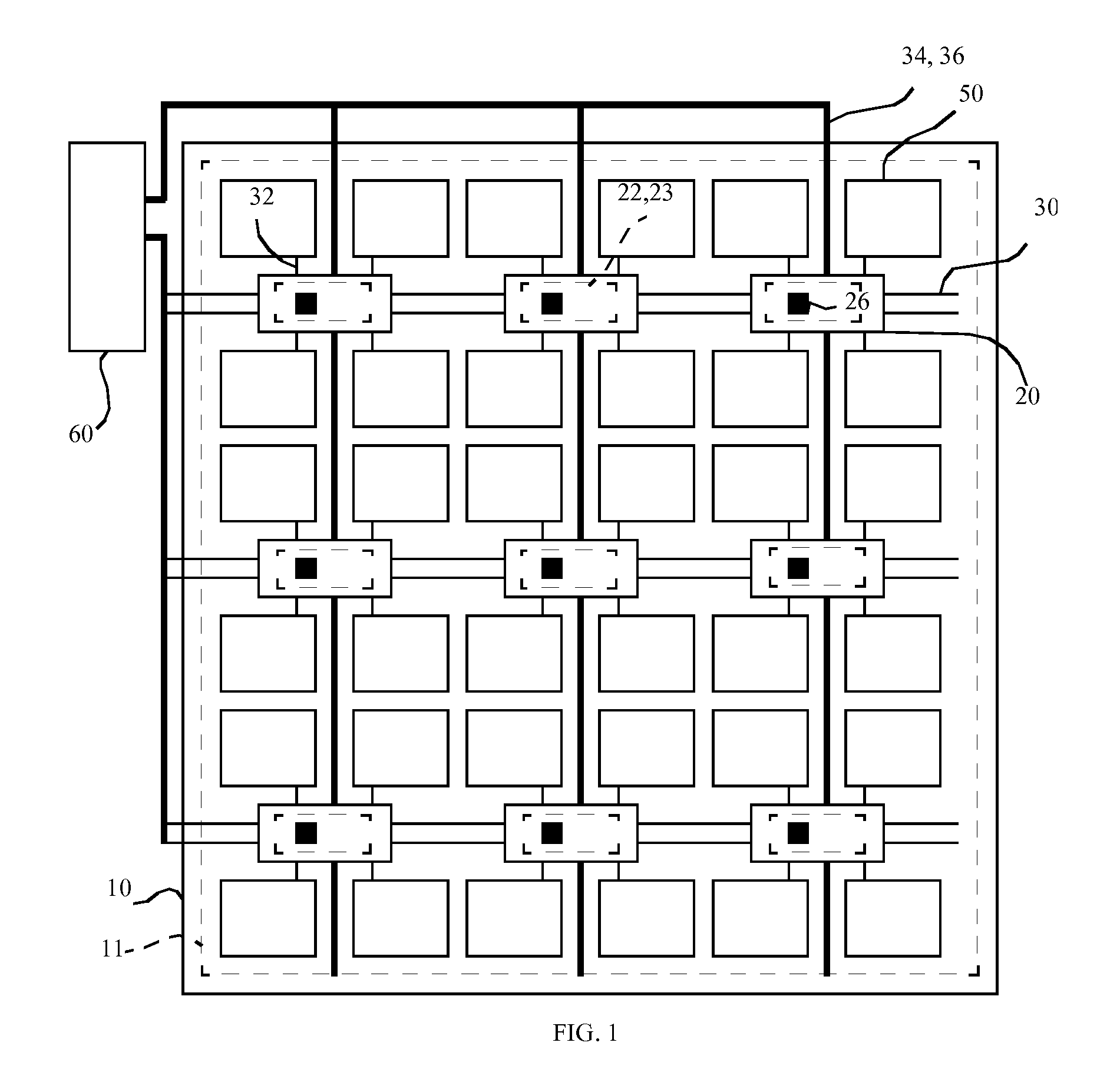Optically testing chiplets in display device
a display device and chiplet technology, applied in the field of display devices, can solve the problems of low performance, low manufacturing process efficiency, and large size of thin-film transistors made from amorphous or polycrystalline silicon, and achieve the effect of improving the performance of control elements and efficient way to test chiplets
- Summary
- Abstract
- Description
- Claims
- Application Information
AI Technical Summary
Benefits of technology
Problems solved by technology
Method used
Image
Examples
Embodiment Construction
[0036]Referring to schematic FIG. 1 and cross-section FIG. 8, a display, according to one embodiment of the present invention, includes a display substrate 10 having a display area 11. A plurality of pixels 50 are located in the display area 11, each pixel 50 including a control electrode 12, a second electrode 16, and at least one layer of light-emitting material 14 located between the control electrode 12 and second electrode 16 that emits light in response to a current provided by the control electrode 12 and the second electrode 16. A plurality of chiplets 20 having a chiplet substrate 28 independent of the display substrate 10 are located over the display substrate 10 in the display area 11, each chiplet 20 having at least one connection pad 24, at least one pixel control circuit 22, and at least one pixel test circuit 23. The pixel control circuit 22 is connected to the control electrode 12 through an electrical connection 32 for driving the control electrode 12 and the layer ...
PUM
 Login to View More
Login to View More Abstract
Description
Claims
Application Information
 Login to View More
Login to View More - R&D
- Intellectual Property
- Life Sciences
- Materials
- Tech Scout
- Unparalleled Data Quality
- Higher Quality Content
- 60% Fewer Hallucinations
Browse by: Latest US Patents, China's latest patents, Technical Efficacy Thesaurus, Application Domain, Technology Topic, Popular Technical Reports.
© 2025 PatSnap. All rights reserved.Legal|Privacy policy|Modern Slavery Act Transparency Statement|Sitemap|About US| Contact US: help@patsnap.com



